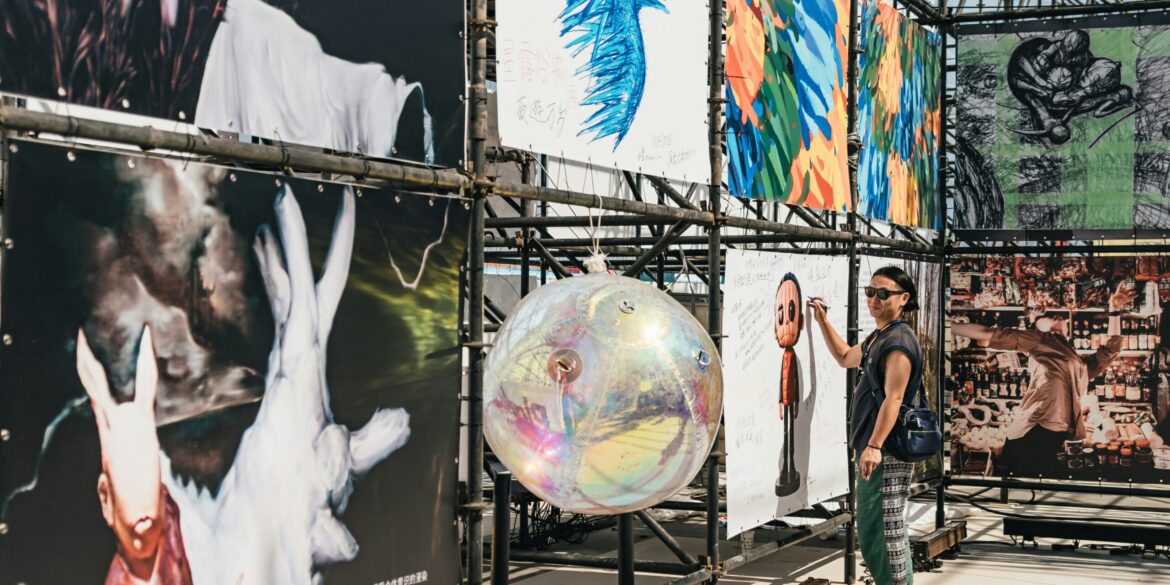Los Angeles, CA — Over the Memorial Day weekend, the streets of Downtown Los Angeles’ Arts District came alive with color, music, and creativity as the first-ever “Canvas in the City” outdoor art festival attracted more than 15,000 visitors. Running from May 23 to May 25, the festival marked a significant cultural milestone for LA’s urban core, blending the city’s storied street art heritage with new artistic expressions in a family-friendly, inclusive setting.
The festival’s timing coincides with a renewed cultural energy in Downtown LA, where artists, entrepreneurs, and city officials have collaborated in recent years to transform industrial spaces into vibrant galleries, studios, and public art venues. After the pandemic’s impact on in-person events, “Canvas in the City” emerged as a critical moment to reassert the importance of art as a communal experience.
At the heart of the event were over 100 large-scale murals painted by an eclectic mix of established and emerging artists. Notable names included Futura, whose pioneering abstract graffiti art helped shape the urban art movement globally, and Shepard Fairey, famed for his “Hope” poster and advocacy through street art. Both artists worked live on new pieces during the festival, drawing crowds eager to witness the creative process.
Beyond visual art, the festival featured interactive installations, live music performances, food trucks specializing in local cuisine, and a marketplace for handmade crafts. Local nonprofit organizations partnered to offer workshops for children and youth, emphasizing art’s role in education and community healing. Festival director Marissa Huang, a longtime advocate for urban arts, expressed pride in the event’s broad appeal. “We wanted to create a space that celebrates creativity, connects people from all walks of life, and supports the artists who call LA home.”
Economic benefits were evident. Restaurants, bars, and retail shops in the surrounding area reported a surge in business, with many noting that the event helped expand their customer base beyond regular visitors. According to a report from the Los Angeles Economic Development Corporation, cultural events like “Canvas in the City” contribute significantly to local economies by attracting tourists and encouraging spending.
City officials echoed this sentiment. Los Angeles City Councilmember Nithya Raman, who represents the Arts District, highlighted how the festival aligns with broader urban revitalization efforts. “We see art as a driver for economic opportunity, equity, and community engagement,” Raman said. “Events like this not only enrich lives but help create safe, vibrant public spaces.”
The festival also prioritized sustainability, implementing zero-waste initiatives and encouraging attendees to use public transit or bike to the venue. This environmental focus reflected LA’s growing commitment to green urban development, aligning with citywide climate goals.
Feedback from attendees underscored the event’s success. Local resident Carlos Mendoza shared, “It’s amazing to see art come alive on our streets. It feels like the city is breathing new energy.” Visitors from nearby Orange County and even San Diego made day trips to participate, highlighting the festival’s regional draw.
Looking ahead, organizers plan to expand “Canvas in the City” into a multi-venue event spanning several LA neighborhoods, incorporating diverse artistic disciplines such as dance, theater, and digital media. Discussions are already underway with local schools and community groups to foster ongoing creative programming throughout the year.
As cities across the country grapple with how to revive public spaces and support creative economies post-pandemic, LA’s new festival offers a hopeful model. By investing in the arts and inviting the community into the process, “Canvas in the City” is more than a festival—it’s a catalyst for urban renewal and cultural connection.

